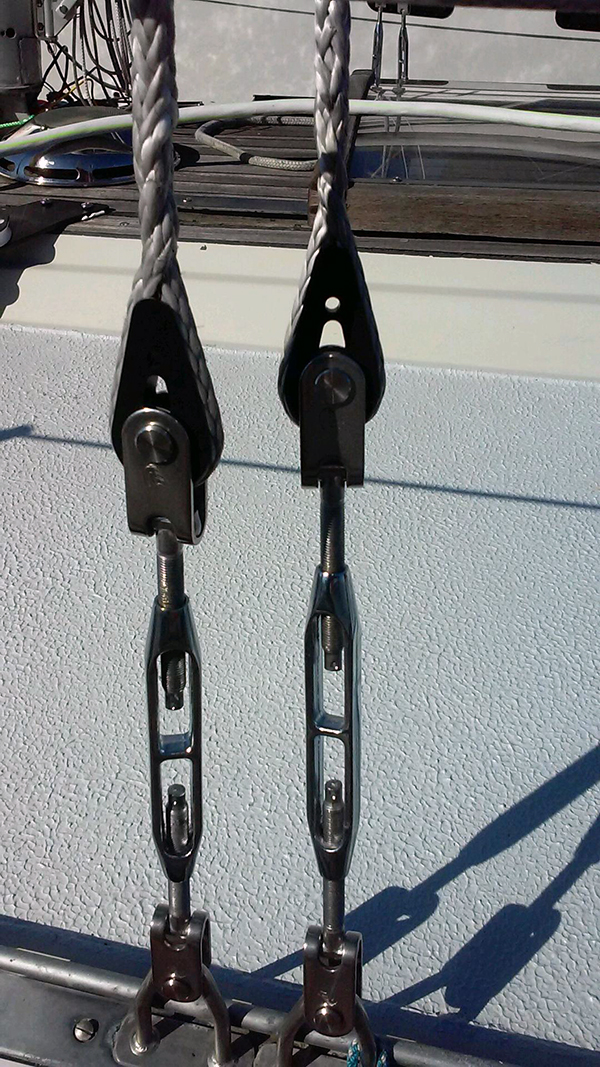Finished rigging my Aphrodite 101 with 7mm STS-HSR. Couple of photos below. Made two purchases of the STS-HSR from West Marine. The first was on close-out. This batch was stiff and smooth, everything you would expect. Second purchase was gooey. Clearly a coating had been applied and maybe never set. When milking the splices the coating would come off in little gooey balls. Anyone have a better experience with this stuff?
I contacted NE Ropes about the coating, they responded saying they'd chase down the gooey spool from West Marine and send me some replacement "ASAP"... that was a little over 1 month ago. The contact won't call me back or respond to email. I think maybe I won't buy this product again.
Anyway, some thoughts on the rigging. Splicing dyneema standing rigging is definitely fussy. There's the constructional stretch in the splices which I measured by splicing up a short line and tensioning to 2000 lbs. But there also seems to be constructional stretch in the line, maybe from handling. The longer runs stretched more and I wound up re-splicing them during my pre-stretch session. The pre-stretch was done by bringing a chain around the Thomas G. Thompson's mooring cleat (UW's research vessel) and attaching the other end to a big truck via a come-a-long. I rented a tension dynomometer to measure the tension in the line. The crappy little harbor freight come-a-long was only good for 2000 lbs. and my truck started slipping so had to put it in 4WD. I was shooting for 3k lbs.
The dyneema is an interesting conversation piece at the dock, but on a rig this small and simple I think the stretch vs. weight vs. windage war would be won by the 5mm rod that was originally on the boat. To that end, I ordered a new 5 mm rod headstay from BSI, dyneema and hanks not getting along. The 5mm rod actually turned out to be cheaper than 7mm dyneema. So it goes.
Few things for anyone interested. I cnc machined my "terminators" (Coligo term) from Ultem 1000 which is a plastic about 1.5x stronger than delrin (acetal) and has no UV susceptibility. FEA modeling was done in Solidworks. The shrouds were turned at the spreaders by a heavy duty shackle cut in half and tig welded to the spreader tips, seized on with 316 welding rod. #6 Alexander Roberts t-bar ring fitting were used up top. The rig has now been through two 35 knot blows with no issues.





